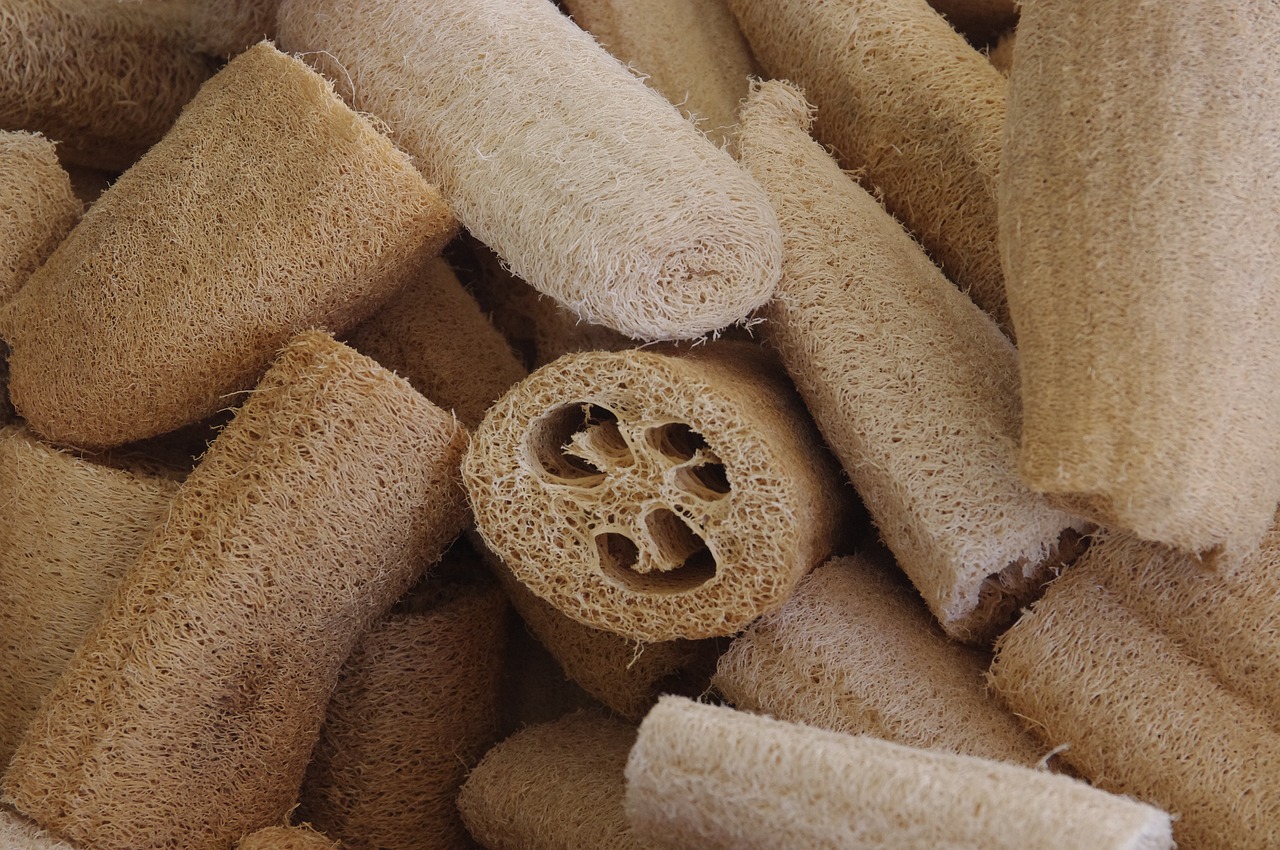Whether you’re an experienced gardener or a beginner, this guide will walk you through the process of cultivating and harvesting loofah.
What is Loofah?
Loofah, also spelled luffa, is a plant in the cucumber family, scientifically known as Luffa aegyptiaca and Luffa cylindrica. While it may be familiar to many as a sponge used in bathing and cleaning, its original form is quite different. The loofah fruit is elongated and resembles a cucumber in appearance. When dried and processed, the fibrous interior can be transformed into a natural sponge.
Harvesting Loofah
Once your loofah plants are established, it will be exciting to see the fruits develop. Knowing when and how to harvest them is crucial for using them effectively.
Signs of Maturity
Loofah fruits are typically ready for harvest when they are about 12 to 18 inches long. You can check their maturity by looking for these signs:
Color: The fruit will be green when immature and will begin to turn yellow-brown as it matures.
Texture: Mature loofah will feel firm to the touch.
Drying: If you do not harvest the loofah, they will eventually dry on the vine. The skin will become hard, and you may hear the seeds rattling inside when shaking the fruit.
Harvesting Process
Here’s how to harvest loofah properly:
Use Pruners: To minimize damage to the plant, use sharp garden pruners to cut the loofah from the vine, leaving a few inches of stem attached.
Timing: Harvest in the morning when temperatures are cooler, which helps keep the fruit fresh.
Storage: Once harvested, you can store loofah in a cool and dry place for a few weeks. If you plan to use them as sponges, it’s best to harvest them when they are still green, as this allows for a softer texture.
Preparing Loofah for Use
After harvesting, loofah fruits need to be prepared properly if you want to use them as natural sponges or in crafts. Below are the steps to prepare and process your loofah:
1. Cleaning the Loofah
If harvested green, start by rinsing the loofah under running water. This removes any dirt or residues. If you prefer to use dried loofah, follow these steps:
Drying: For dried loofah, place them in a well-ventilated area out of direct sunlight. Allow them to dry completely for several days. The skin will darken and shrink as it dries.
Peeling: Once dried, you can peel off the outer skin. The skin should easily come off if the loofah is adequately dried.
Seed Removal: After peeling, you may notice seeds inside. Shake the loofah to remove these seeds. If they are stubborn, you can break the loofah open carefully to get them out.
2. Trimming
Once cleaned and peeled, the loofah can be trimmed to your desired length. Use scissors to cut the loofah into smaller pieces if you want sponges to fit specific needs (such as for sponge baths or cleaning).
3. Final Rinse and Drying
After trimming, give the loofah pieces a final rinse in warm water to remove any remaining seeds or debris. Rinse thoroughly and lay them flat to dry. Ensure they are fully dried before storing to prevent mold growth.
Uses for Loofah
Once processed, loofah can be used in numerous ways:
Bathing Sponges: Loofah sponges are popular for exfoliating and scrubbing skin. Their natural fibers help improve circulation and remove dead skin.
Kitchen Cleaning: Use loofah sponges for scrubbing dishes and surfaces. They are biodegradable and offer a natural alternative to synthetic cleaning sponges.
Crafting: The natural fibrous texture of loofah makes it suitable for crafting. Create decorative pieces, such as potpourri or holiday ornaments.
Gardening: Dried loofah can also be utilized as a natural mulch in the garden. It helps retain soil moisture and suppress weeds.
Plant Pots: A loofah can be turned into a charming planter. Use a section of loofah as a biodegradable pot for seedlings.
Growing Conditions
Before you consider harvesting loofah, you first need to understand how to grow it successfully. Loofah plants prefer warm climates and require plenty of sunlight. Here are some key conditions for growing loofah:
Climate: Loofah thrives in USDA hardiness zones 7 to 11. It requires a long growing season, typically around 150 to 200 days without frost.
Soil Type: Well-drained, fertile soil is essential. A sandy or loamy soil rich in organic matter will provide all the nutrients needed for healthy growth.
Watering Needs: Consistent moisture is crucial. Water the plants regularly, especially during dry spells, but avoid waterlogging, as this can lead to root rot.
Sunlight: Loofah plants need full sun, so ensure they receive at least 6 to 8 hours of direct sunlight each day.
Planting Loofah
Loofah can be started from seed, which is generally the most common method. Here are steps to plant your loofah:
Seeds: Soak the seeds in water for 24 hours before planting to enhance germination rates. This process helps to break down the hard outer shell of the seeds.
Timing: Plant the seeds outdoors after the last frost date. For regions with shorter growing seasons, consider starting seeds indoors about 4-6 weeks before transplanting outside.
Spacing: Space your plants 3-4 feet apart, as they will grow vigorously and require ample room to spread.
Support Structures: Loofah vines can grow quite tall (up to 30 feet) and will need support. Install a trellis or fence for the plants to climb, which also helps keep the fruit off the ground and reduces rot.
Caring for Loofah Plants
While loofah plants are relatively low-maintenance, providing the right care will ensure you have a bountiful harvest. Here are some tips:
Fertilizer: Use a balanced fertilizer or compost-rich soil to encourage strong growth. Fertilize every few weeks during the growing season, especially when the plants start to blossom.
Pest Management: Keep an eye out for common pests, such as aphids and cucumber beetles. Regularly inspect the leaves and use organic pesticides or insecticidal soap if needed.
Pruning: Prune the vines by pinching off the tips to encourage bushier growth and to promote better air circulation.
Conclusion
Harvesting loofah from your garden can be a satisfying and innovative addition to your gardening endeavors. From understanding the growing conditions to knowing when to harvest and how to process the fruit, this journey culminates in the joy of having a versatile, natural product at your disposal.
With proper care and attention, loofah plants can not only yield a bountiful crop but also enhance your home and lifestyle. Enjoy the process of growing and harvesting these unique plants, and you’ll be rewarded with a treasure trove of uses for years to come.
Whether you are using it for personal care, household tasks, or creative projects, loofah proves to be both an eco-friendly and practical asset. Embrace this fascinating plant in your garden and relish the benefits it offers, making gardening a more enriching experience.






